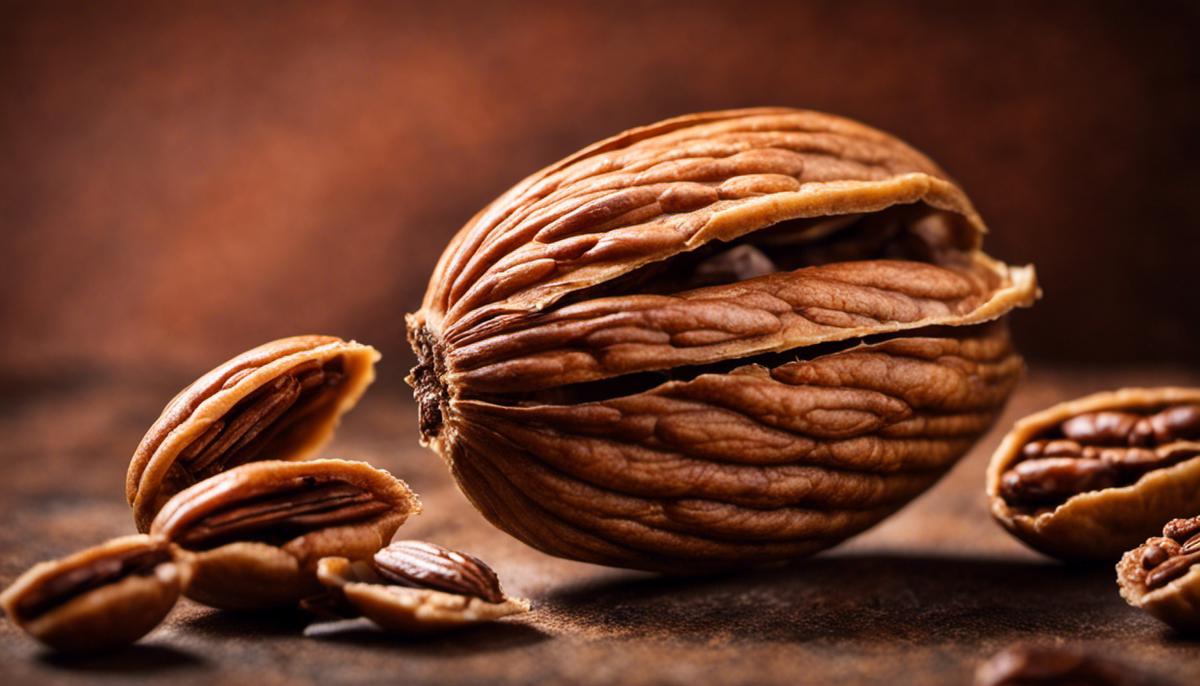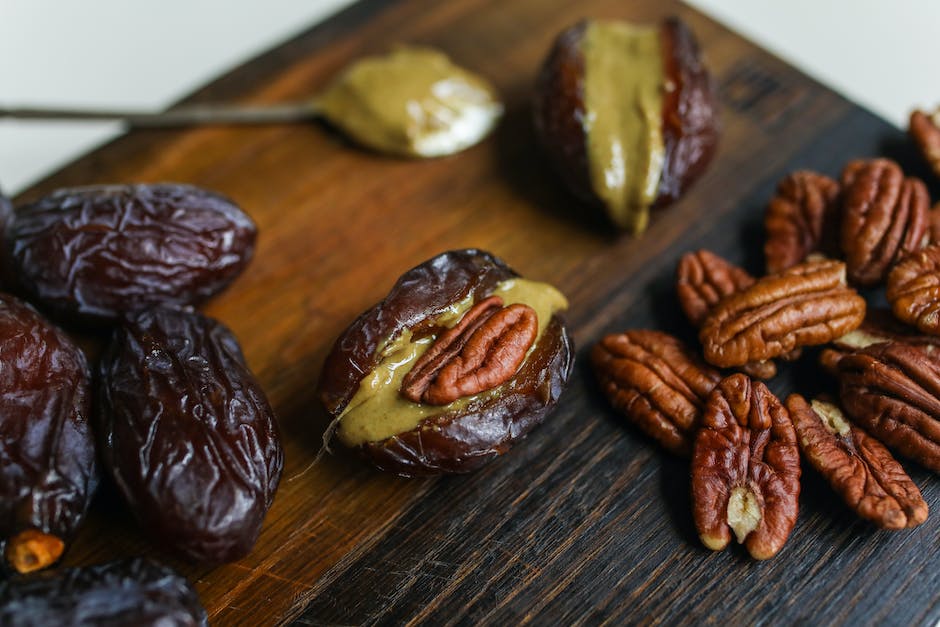Planting a Pecan Tree from a Nut: A Beginners Guide

Growing your own pecan tree takes time, patience, and care, but the reward is beyond compare. The joy of seeing a seedling flourish into a tree that bears delicious pecans is a fulfilling sight to behold. Whether you’re an aficionado of homegrown produce, a gardening enthusiast, or someone simply looking for a gratifying challenge, this guide will steer you through the significant steps: Starting with the intricate process of preparing a pecan nut, using a method called stratification, which involves cleaning and a specific cold treatment that breaks dormancy. We’ll then be guiding you on selecting the perfect spot for your tree, factoring in essential components such as sunlight exposure, soil makeup, and drainage requirements. Lastly, we’ll walk you through the critical steps of planting your prepared pecan and explain how to nurture for your fledgling tree, which includes regular watering, pruning, and protection against diseases.
Preparation of Pecan Nut
Growing Greatness: A Step by Step Guide to Preparing Pecan Nuts for Planting
Enthusiastically delving into pecan production is truly a thrilling journey. It’s a hobby that takes you on a seasonal dance with nature, a waltz where you see the miracle of life unfurl from a simple nut to a stately pecan tree. However, to truly harness the wonder of pecan propagation, the first step lies in adequately preparing your pecan nut for planting, a process called stratification.
Step One: Procure Fresh Pecans
Pecan production starts with high-quality seeds. Source freshly harvested pecan nuts, ideally from a local provider. Why? Because the fresher the seed, the higher the probability of germination.
Step Two: Clean and Select your Seeds
To remove any inherent dirt or particles, give your nuts a good wash. Subsequently, select the healthiest-looking nuts, discarding any with visible signs of damage, like cracks or signs of disease.
Step Three: Soak your Seeds
Next up: hydration. Pecan nuts have a hard shell that hampers speedier germination. Soaking helps soften this shell and initiates the germination process. Immerse your cleaned pecan nuts in a bucket of lukewarm water for 24-48 hours.
Step Four: Stratification
In the world of pecan propagation, this step is a game-changer! Stratification mimics the naturally occurring winter conditions necessary for pecan nut dormancy break. Start by placing your soaked nuts in a plastic bag filled with a moist medium like peat moss or sand. The aim is to maintain a humid environment that suppresses nut rot but encourages sprouting. Store this bag in a refrigerator set at 3-5 degrees Celsius (37-41 degrees Fahrenheit) for 2-3 months.
Step Five: Check for Sprouts
One of the truly exciting moments in this hobby is the emergence of those first sprouts. Peek into your bag every few weeks to keep tabs on the germination process. Once sprouts appear, it’s time to move towards the grand finale – planting!
Step Six: Planting
Onto the most rewarding stage: introducing your sprouted pecan nut to its permanent home, the soil. Dig a small hole, about 3-4 inches deep, and plant your sprouted pecan nut. Ideally, the soil should be well-draining and rich in organic matter. Water it generously but without waterlogging it, and then play the waiting game. In due time, a sapling will emerge, making all the effort spent preparing the pecan nut for planting worth every second.
And there you have it, a stepwise rendezvous with pecan nut preparation for planting. Here’s to many seasons of pecan joy and the future crunch of homegrown goodness!

Choosing The Right Location
Choosing the Perfect Spot for Your Pecan Tree
Undeniably, the decision of where to plant a pecan tree bears much influence on the tree’s overall growth, productivity, and longevity. The meticulous process of nurturing a sprouted pecan seed into a mighty tree deserves the additional effort in selecting the right location. It’s finally time to transition your budding pecan sprout into its permanent home! Here’s how to do it.
Start by thoroughly scouting your yard for an ideal location. Pecan trees thrive in deep and well-drained soil that features a pH level between 6.0 and 6.5. This slightly acidic environment will allow your young pecan sprout to take in nutrients effectively. Testing kits are readily available at garden centers to help ascertain the soil’s pH levels, making this step easy and straightforward, even for beginners.
Pecan trees, with their potential sprawling size and vast canopy, necessitate consideration for adequate spacing. It’s essential to plant your pecan sapling at least 20 to 30 feet away from any buildings or other trees. This substantial buffer space is necessary as mature pecan trees can reach impressive heights between 60 to 80 feet and have wide-reaching branches. Overcrowding trees can result in stunted growth, inadequate sunlight, increased susceptibility to disease, and lower nut yield.
Sun exposure is another critical factor to ponder upon. Pecan trees are sun-worshipers and need at least six hours of full sun each day. Therefore, avoid areas that have heavy shade during various parts of the day. Remember, more sun exposure implies more energy for the tree, which translates to a better pecan yield.
Lastly, it’s vital to consider wind direction. Pecan trees are pollinated by wind rather than bees, so take note of the typical wind patterns in your location. The pollen from male flowers needs to be borne by the wind to reach female flowers for successful fertilization.
Armed with this comprehensive knowledge, transitioning your sprouted pecan nut into a towering and productive pecan tree should be a rewarding journey. Remember, patience is key. Although pecan trees take several years before they start bearing fruit, the flavorful and nutrient-rich pecans will be well worth the wait. Happy planting!

Photo by simonfromengland on Unsplash
Planting and Care
Setting the Stage for Your Newly Planted Pecan Seedling
Now that our precious pecan nutlings are snugly tucked into their dirt homes, the journey to becoming towering pecan trees has begun! The focus of our endeavors now diverts from planting sprouted pecan nuts to nurturing and maintaining these seedlings. Let’s dive in and learn how to raise these baby trees with precision and passion.
Watering Regimen for Pecan Seedlings
The importance of a proper watering regimen cannot be emphasized enough! Small pecan seedlings are delicate beings that need consistent and careful watering. Ideally, they should receive about an inch of water per week. Be cautious of over-watering though. Too much water will result in root rot. Remember, consistency is key here!
Mulching Helps in More Ways Than One
After ensuring the water supply is top-notch, turn your attention to mulch. A 2-to-3-inch layer of organic mulch around the base of the tree serves multiple purposes. It suppresses weed growth, retains moisture in the soil, and adds nutrients as it decomposes. This won’t just protect your sapling, but enhance its growth, too.
The Watchful Eye: Caring, Observing, and Reacting
Keep a watchful eye on the seedlings in these early growth stages. Look for signs of disease or nutrient deficiency, such as discoloration or wilting leaves. If symptoms surface, a soil test can help identify the issue. Then, opt for a relevant, organic fertilizer to restore balance.
Protect from Inner and Outer Threats!
Note to ourselves, fend off would-be pests and prevent nibblers! A cylinder of 1/4-inch mesh hardware cloth, secured to the ground and extending about a foot above the seedling, is an easy and practical solution. For inner threats, a big “no-no” is overcrowding. That’s why thinning plays a crucial role at this stage. If multiple seedlings emerge from the same nut, it’s advised to leave only the healthiest one standing.
Train Young Pecan Trees to Grow Straight and Tall
The pecan tree has a tendency to fork in two directions. Creating the main leader, the tallest, central branch of the tree, is important. Regularly check the growth pattern and gently but firmly redirect the growth trajectory when the time is ripe.
The Support System: Staking Pecan Trees
A young pecan tree can be staked to help it grow straight if it begins to lean. Drive a stake into the ground next to the seedling, then loosely tie the tree to the stake with a soft material like cloth or rubber.
They may look tiny now, but believe it or not, these not-so-noticeable seedlings are certainly prospective giants. With meticulous care, patience, and passion, these little ones will soon soar high and strong, embodying the true pecan spirit. So let’s roll up our sleeves, tune into nature’s rhythm and shower some green-thumbed love. A pecan forest awaits!

So you see, planting and growing a pecan tree from a nut might be an elaborate process, but charting its journey from a hopeful nut to a thriving tree is a rewarding experience. With the knowledge you’ve gained, you are now equipped to navigate every step of the process. From the thoughtful act of preparing the nut, to selecting the ideal location considering sundry factors, and the dedicated care and maintenance the tree requires as it shoots toward the sky. Look forward to the day when you can enjoy the fruits of your labor in the form of delicious pecans, knowing they grew from the love and care of your hands, buttressed by the information laid out in this guide. This isn’t just horticulture – it’s a testament to the miracles of life and growth, witnessed firsthand.



